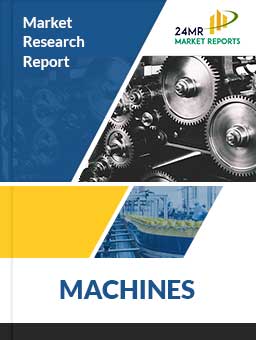
COMPANIES COVERED
Yahua GroupDownload FREE Report Sample
Download Free sampleDefinition
Electronic Delay Detonators (EDD) are programmable blasting devices designed to initiate explosive charges at precisely defined intervals. Unlike traditional pyrotechnic delay detonators, which rely on chemical delay compositions, EDDs incorporate microprocessors, capacitors, and digital timing circuits to deliver highly accurate millisecond‑level control. This precision enables blast engineers in mining, quarrying, tunnelling, and large-scale construction to tailor fragmentation, reduce ground vibration, and optimize muck pile profiles. EDDs also improve safety by minimizing misfires and facilitating remote firing via encrypted communications. The system architecture typically comprises a blasting box, down‑lines with encoded signals, and detonators embedded with electronic delay chips that store unique time codes. Over the last two decades, EDDs have evolved from niche tools into mainstream blasting solutions thanks to advances in ruggedised electronics, battery technology, and field‑programmable gate arrays (FPGAs).
Market Size
Global Electronic Delay Detonators (EDD) market was valued at USD 219.40 million in 2024 and is forecast to reach USD 434.94 million by 2032, expanding at a CAGR of 7.90 %.
Growth is underpinned by escalating mineral extraction in emerging economies, stricter environmental regulations that favour precision blasting, and rising infrastructure investments worldwide.
North America, the EDD market stood at USD 65.17 million in 2024 and is projected to register a 6.77 % CAGR between 2025 and 2032, driven by revitalised hard‑rock mining projects in the United States and Canada.
To know more about market statistics, Download a FREE Sample copy
Historically, EDD adoption accelerated between 2019 and 2023 as large open‑pit mines shifted from pyrotechnic to electronic systems to meet tighter vibration limits. During this period, average EDD unit prices fell by approximately 12 %, thanks to economies of scale and localisation of component assembly in Asia‑Pacific. Simultaneously, the average number of delay steps available per detonator ballooned from 200 to over 2 000, giving engineers unparalleled design flexibility.
Market Dynamics (Drivers, Restraints, Opportunities, and Challenges)
Drivers
Stringent Environmental & Safety Regulations: Governments mandate blast‑induced vibration and fly‑rock limits, pushing operators toward precision EDD solutions.
Rise in Metal Mining: The global energy transition fuels demand for copper, lithium, and rare earths—metals typically extracted from hard‑rock deposits requiring controlled blasting.
Operational Efficiency: Optimised fragmentation reduces downstream crushing costs by up to 15 %, offsetting higher detonator expenses.
Digital Mine Initiatives: Integration with blast‑design software and IoT devices supports data‑driven decision‑making.
Restraints
High Upfront Cost: EDDs can cost 2‑3 × more per hole than pyrotechnic equivalents, deterring small‑scale quarries.
Harsh Operating Conditions: Extreme temperatures, moisture, and electromagnetic interference can impair electronics if not properly shielded.
Skilled Labour Requirement: Programming and deploying EDDs demand trained personnel, creating a skills gap in developing regions.
Opportunities
Underground Mining Expansion: Block‑caving and long‑hole stoping benefit from EDD‑driven sequential rings, opening fresh demand.
Automation & Remote Blasting: Wireless EDD networks enable stand‑off blasting in high‑risk zones, attracting interest from tunnelling megaprojects.
Lifecycle Services: Vendors can monetise design, monitoring, and analytics platforms, shifting from product to solution sales.
Challenges
Supply‑Chain Volatility: Semiconductor shortages and geopolitical tensions threaten stable component supply.
Regulatory Divergence: Varying national standards for electronic blasting devices complicate global product certification.
Cybersecurity: As EDD systems become connected, safeguarding against signal hacking and sabotage is paramount.
Regional Analysis
North America
Europe
Asia‑Pacific
South America
Middle East & Africa
Competitor Analysis (in brief)
The EDD landscape is moderately consolidated. Orica retains the largest share through its iSeries detonators and the BlastIQ™ digital ecosystem. Dyno Nobel (Incitec Pivot) competes via DIGISHOT® Plus. EPC Groupe and NITROERG maintain strong positions in Europe. In China, Yahua Group and Poly Union Group dominate, benefiting from local regulations that favour domestic sourcing. Oil‑field service majors like Schlumberger supply specialised EDDs for seismic exploration shots. Competitive strategies centre on expanding delay range, enhancing software integration, and offering subscription‑based analytics.
Global Electronic Delay Detonators (EDD): Market Segmentation Analysis
Electronic Delay Detonators Market provides a deep insight into the global Electronic Delay Detonators (EDD), covering all its essential aspects. This ranges from a macro overview of the market to micro details of the market size, competitive landscape, development trend, niche market, key market drivers and challenges, SWOT analysis, value chain analysis, etc. The analysis helps the reader to shape the competition within the industries and strategies for the competitive environment to enhance the potential profit. Furthermore, it provides a simple framework for evaluating and assessing the position of the business organization. The report structure also focuses on the competitive landscape of the Global Electronic Delay Detonators (EDD). Electronic Delay Detonators Market introduces in detail the market share, market performance, product situation, operation situation, etc., of the main players, which helps the readers in the industry to identify the main competitors and deeply understand the competition pattern of the market. In a word, Electronic Delay Detonators Market is a must-read for industry players, investors, researchers, consultants, business strategists, and all those who have any kind of stake or are planning to foray into the Electronic Delay Detonators (EDD) in any manner.
Market Segmentation (by Application)
Market Segmentation (by Type)
Key Company
Geographic Segmentation
FAQ
What is the current market size of Electronic Delay Detonators (EDD)?
Which are the key companies operating in the Electronic Delay Detonators (EDD) market?
What are the key growth drivers in the Electronic Delay Detonators (EDD) market?
Which regions dominate the Electronic Delay Detonators (EDD) market?
What are the emerging trends in the Electronic Delay Detonators (EDD) market?
Key Benefits of This Market Research:
Key Reasons to Buy this Report:
Customization of the Report
Chapter Outline

Speak to our Custom Research Team and get the Custom Research in a budget
Custom ResearchFrequently Asked Questions ?
A license granted to one user. Rules or conditions might be applied for e.g. the use of electric files (PDFs) or printings, depending on product.
A license granted to multiple users.
A license granted to a single business site/establishment.
A license granted to all employees within organisation access to the product.
Upto Working 24 to 48 hrs
Upto 72 hrs max - Weekends and Public Holidays
Online Payments with PayPal and CCavenue
Wire Transfer/Bank Transfer
Hard Copy




 Industry Market Size
Industry Market Size SWOT Analysis
SWOT Analysis Industry Major Players
Industry Major Players Revenue Forecasts
Revenue Forecasts Historical and Forecast Growth
Historical and Forecast Growth Profitability Analysis
Profitability Analysis
























